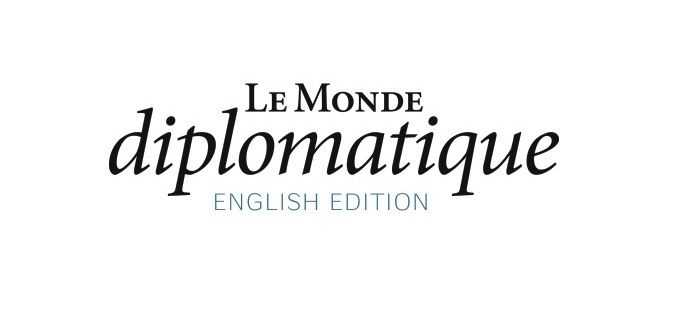
Peter Zalmayev, director of the NGO Eurasia Democracy Initiative, says: “Essentially, the regime hasn’t changed since independence. Berdimuhammedow is younger than Niyazov, but … exercises power in the same way.”
When President Saparmurat Niyazov died on 21 December 2006, Turkmenistan’s state television channels broadcast the news on a loop.There was consternation at Bouygues, the French construction group, which had been operating in the Central Asian republic since 1994; Niyazov had been a very good customer. The self-proclaimed Türkmenbaşy (father of all Turkmens) had filled the capital, Ashgabat, with extravagant buildings: an opulent presidential palace, sumptuous ministries, a central bank with a giant gold ingot on its façade. On Niyazov’s behalf (or that of his successor, Gurbanguly Berdimuhammedow, who has been just as good a customer), Bouygues has delivered 64 buildings over 20 years. Its Turkmen subsidiary has accounted for half its foreign sales over that period.
According to the memoirs of Aldo Carbonaro (director-general of Bouygues Turkmen from 1999 to 2009), Charlie Senter, Bouygues no 2 in Ashgabat, phoned his boss, who was back in France for Christmas: “The president died last night, and before dying he asked us to handle his funeral. We need to find a viewing coffin with two lids: a glass one and a wooden one.” The anecdote illustrates the closeness between the multinational and a regime that showed no mercy towards its rare opponents. Carbonaro took charge of Operation Presidential Casket. The only suitable model in Paris was so big it would not go through the cargo door of the Boeing 737 on regular Paris-Ashgabat flights. Carbonaro called in the commander of Bouygues Air, who had the cabin of a company jet partially dismantled so that the coffin could be loaded. Carbonaro describes the final journey of the man who had been a close friend with evident emotion: “The coffin … was driven right across the city and then [on to] Kipchak, 15km away, amid applause from the people, who had gathered all along the route.”
Biggest mosque in Central Asia
The family mausoleum at Kipchak (Niyazov’s birthplace), with its gilded dome, was designed by Bouygues. Two soldiers stand motionless, guarding its entrance; a third keeps an eye on visitors. As with most government buildings, photography is strictly forbidden. And you can’t quote any Turkmens you talk to without getting them arrested as soon as the article is published. A young chaperone gives us the official version of the president’s life. The five Niyazov family tombs are of black marble, the walls and floor of white marble. Saparmurat’s tomb is flanked by those of his mother and two brothers, who died in the earthquake that destroyed Ashgabat in 1948. Their tombs are empty: the bodies were never found, nor was that of Saparmurat’s father, a soldier in the Soviet army, killed in the second world war.
The mosque next to the mausoleum (Bouygues again) is also covered in marble. It’s the biggest in Central Asia, and the most garish, with marble, gold, and water features. “The finished complex was a fine sight, with its immense fountains and its wall of foaming water alongside the road,” Carbonaro writes. The rest of the country — 80% desert — is chronically short of water.
Water is not the only thing Turkmenistan lacks. Twenty years of indoctrination, repression and presidential personality cult have stifled all criticism. Niyazov’s massive Ruhnama (Book of the Soul), published in 1993, is a key text at primary and secondary school, and university level. It contains commentaries on Turkmen history and culture, which explain, among other things, that Turkmens invented the wheel and writing, and (significantly in a Muslim culture) that “the beard grows from the brain. The longer the beard, the less brain there is”.
Bouygues covered the minarets and interior walls of the Kipchak mosque with quotations from the Ruhnama, and paid for the second volume to be translated into French. (Niyazov personally thanked Carbonaro and Senter in 2006.) But Bouygues was not the only foreign group to spend money to satisfy the president’s whims: DaimlerChrysler had the Ruhnama translated into German; Hungarian, Irish and Italian multinationals also paid their dues, as Finnish journalist Arto Halonen records in his documentary Shadow of the Holy Book (2007). This won the Grand Prix at the Paris International Human Rights Film Festival, where the jury said they wanted to “call attention to … the way in which the world’s leading construction company had compromised itself with a totalitarian regime”.
The Kipchak mosque, which cost nearly $153m, can accommodate 10,000 worshippers, but we see just three. Most of the year it is empty, like much of this country of only 5 million, which has only 10 people per square kilometre, despite an abundance of natural resources. For the last five years, Turkmenistan has had 10% growth, driven mainly by exports of gas (it has the world’s fourth largest reserves). But most of the wealth is in the hands of a few: after Russia, Turkmenistan is the second most unequal country in the former Soviet bloc, with 40% unemployment — though gas, electricity, petrol, water and salt are virtually free.
Start of the love affair
The love affair between Bouygues and Niyazov began in 1993, when Niyazov, on a short private visit to France as a guest of President François Mitterrand, was taken to the palatial Bouygues HQ, known as Challenger, set in 30 verdant hectares at Saint-Quentin-en-Yvelines, near Versailles. Arriving from an obscure country, free from Soviet domination for just two years, Niyazov was greeted like an ambassador at the court of Louis XIV. The biography of Francis Bouygues, founder of the group and father of its present chairman Martin, describes Challenger as a corporate showcase that “evokes the despotism of a king who wants to govern every aspect of his subjects’ lives, no matter how small, and will brook no resistance” . The splendour seduced Niyazov, whose desire to control life in Turkmenistan was taken to absurdity: “A simple remark by the president … would immediately be applied as if it were law. … Niyazov complained about men letting their hair or beard grow, and everyone started to keep their hair short and shave,” writes Jean-Baptiste Jeangène Vilmer.
Bouygues had an asset that no rival could boast — TF1, Europe’s most influential television station. Niyazov asked Bouygues to revamp Turkmenistan’s first state station. “Picture quality was awful and the studios were in a terrible state … TF1’s engineers took charge, and we gave them a package of culture and leisure programmes, along with a few French films,” says a Bouygues director. One Turkmen programme I see shows President Berdimuhammedow issuing instructions, while his ministers silently take notes, like schoolboys; programmes like this are repeated endlessly on the state channels, which hardly anyone watches — Turkmens have access to more than 500 satellite channels.
There is no cultural programming. When Niyazov returned to France in 1996 at the invitation of President Jacques Chirac, he signed a contract with Bouygues for the building of a convention centre, and was then taken to the TF1 studios where, along with Martin Bouygues and TF1’s CEO Patrick le Lay, he took part in a 45-minute discussion with star presenter Jean-Claude Narcy. Le Lay talked a lot about culture: “It’s difficult to develop culture through television when you have such a small population. Even in France, where we have 10 or 12 times as many people, we clearly have trouble in continuing to develop French culture via television.”Niyazov replied: “You have the most powerful television channel in the world, and it’s the biggest vector for culture.” A former Bouygues group director says: “We knew the president would be delighted to appear on French television … we never intended to broadcast the show, but if he believed it would go out…”
TF1 could have told viewers about Bouygues’ architectural impact on Ashgabat. It is built in an oasis in the south, close to the Karakum Desert and to the Iranian border, beyond the Kopet Dag mountains. The government quarter was designed entirely by Bouygues, including the colossal presidential complex, a mix of European classical architecture and Islamic Orientalism with three huge golden domes and a colonnade. Squads of police and soldiers keep the public at a distance, as they do at the justice and defence ministries, the Rukhiyet palace which hosts cultural events; even the fountains and public benches are guarded. There is little traffic on Bitarap Avenue, or any major thoroughfare. Few ordinary citizens venture onto this stage for the presidential personality cult. The only change since 2006 is the giant portraits of Berdimuhammedow alongside the statues of Niyazov.
‘More police than people’
“There are more police than people,” says a bold passer-by.A French businessman agrees: “Ashgabat is a ghost town, a full-scale model.” Development takes priority over the lives of ordinary citizens. In 2008 the Russian quarter of Voyen Nayakliniga was bulldozed to make room for an extension of the presidential palace. “The residents got three days’ notice. When one family refused to go, the police threw their boxes out and took the mother away in handcuffs,” says a witness. After vigorous protests by local women, she was freed and the officers were suspended. Once the area was cleared, the Bouygues construction teams moved in.
On Archabil Avenue, in the south of the city, Bouygues is completing a new convention centre. Apart from the workers on the sites along this ring road, there is no life. A Bouygues manager told US diplomats that “170 staff will be working at the new communications ministry, which has 15,000 square metres of office space” (7) — 88 square metres per person. Pierre Lebovics, French ambassador to Turkmenistan from 2010 to 2014, is not shocked by Berdimuhammedow’s building fever, nor by the role of Bouygues buildings in his propaganda: “It doesn’t seem unreasonable for a new head of state to want to make his mark on the capital city of a country that has only been in existence for 23 years. The kings of France did that, and so do today’s presidents.”
Turkmenistan’s presidents are fussy customers. They supervise projects and inspect sites in person, and rebuke their French contractors publicly, even in front of television cameras, for any delay. “Niyazov … supervised everything, in minute detail, and discussed it all with Bouygues Turkmen and Martin Bouygues,” says Christian Lechervy, former French ambassador to Turkmenistan (2006-10) and Asia advisor to President François Hollande (2012-14). Martin Bouygues visited Turkmenistan at least once a year, for the anniversary of independence on 27 October, to strengthen his personal relationship with the president, and to sign contracts. “In the Niyazov era, Martin [Bouygues] was treated like a head of state,” writes Carbonaro. In 2001, foreign ambassadors were invited to a banquet after the signing of three contracts, but to the great displeasure of most (the US ambassador in particular), the guest of honour was Martin Bouygues. His men obeyed any order, no matter how humiliating: Niyazov once forced Carbonaro to drink a litre of vodka while his cabinet looked on, laughing.
Turkmenistan’s Bouygues-constructed press building, housing both newspapers and agencies, has a façade shaped like an open book, adorned with a golden profile of Niyazov. It stands close to the ministries and presidential palace, and was opened in 2006, a few weeks after the death in a high-security prison of journalist Ogulsapar Muradova. The French ambassador registered his disapproval by boycotting the ceremony. The Turkmen press lacks all freedom.
Unchanging power and wealth
Niyazov’s death did not impact on Bouygues’ turnover. Berdimuhammedow decided that the French would get the prestige buildings, the Turks the services sector, the Germans the hospitals, and the Americans the power stations. Muhamedov Ichanguliev, the president’s brother-in-law, once summoned Carbonaro and asked him to help buy a yacht for the president; they went together to Cannes and eventually found one. The president told Carbonaro: “If Ichanguliev asks you to do something for me that is outside your normal duties, just do it, and don’t worry, you’ll be refunded.”
As well as the extension of the presidential complex, Berdimuhammedow asked Bouygues to build the Oguzkent Hotel, a contract worth $320m, the group’s two biggest and most profitable Turkmen contracts. The Oguzkent, managed directly by the presidential staff, is usually three-quarters empty, and representative of Turkmenistan’s extreme income disparity. “The country’s wealth is not redistributed. It stays in the hands of members of the government, and those they favour,” Vilmer writes (8). Peter Zalmayev, director of the NGO Eurasia Democracy Initiative, says: “Essentially, the regime hasn’t changed since independence. Berdimuhammedow is younger than Niyazov, but … exercises power in the same way.” Berdimuhammedow visited France as a guest of the president in 2010 and dined at Martin Bouygues’ house with the late Christophe Margerie, CEO of Total, and Patrick Kron, CEO of Alstom.
In the steppe 30km west of Kipchak is Geok Tepe, where Bouygues built its first mosque in Turkmenistan, in the 1990s. Here the Turkmens fought a last heroic battle against the Russian invaders, in 1881. Geok Tepe is surrounded by fields of cotton, and many inhabitants work in the textile industry. There is nobody in or around the mosque, nor inside; a flock of pigeons roosts on the main dome. The guide pretends not to understand when I ask about paying a multinational $10m to build a shrine that is hardly used, and the Russian chauffeur won’t talk either. The slightest criticism is grounds for arrest. It’s better to avoid the prison at Ovadan Tepe, 30km northwest of Ashgabat, where political prisoners are locked up in temperatures from 50°C in summer to —20°C in winter, often in total isolation, and tortured.
Another big French construction firm, Vinci, has broken into the Turkmen market, and the world’s number one must now jostle for position with this ambitious newcomer. Is this the beginning of the end for Bouygues? A former group director says: “No, Bouygues has already been given up for dead many times. And no matter what happens, the buildings it has put up in Ashgabat will remain a showcase for the group on a global scale. Without Turkmenistan, we might never have been asked to renovate two-thirds of the palaces in Paris.”
Origin – monde-diplomatique


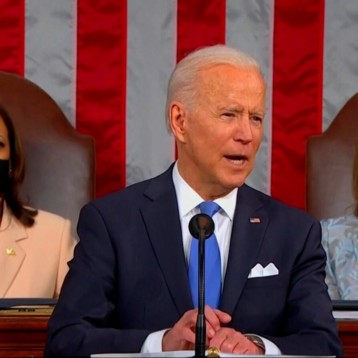
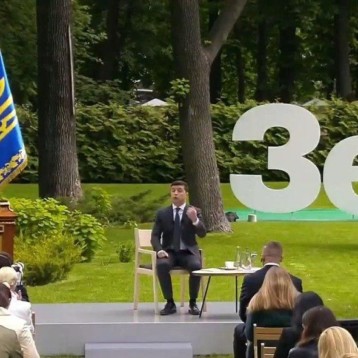
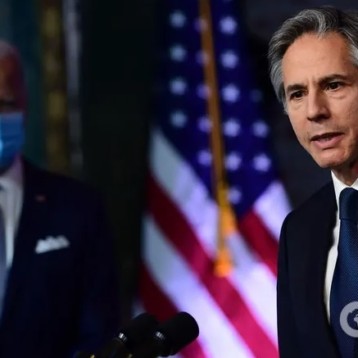

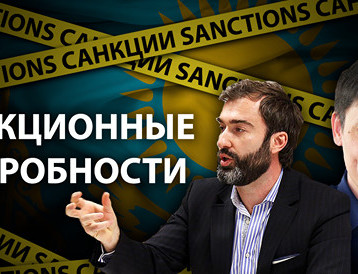
You must be logged in to post a comment.